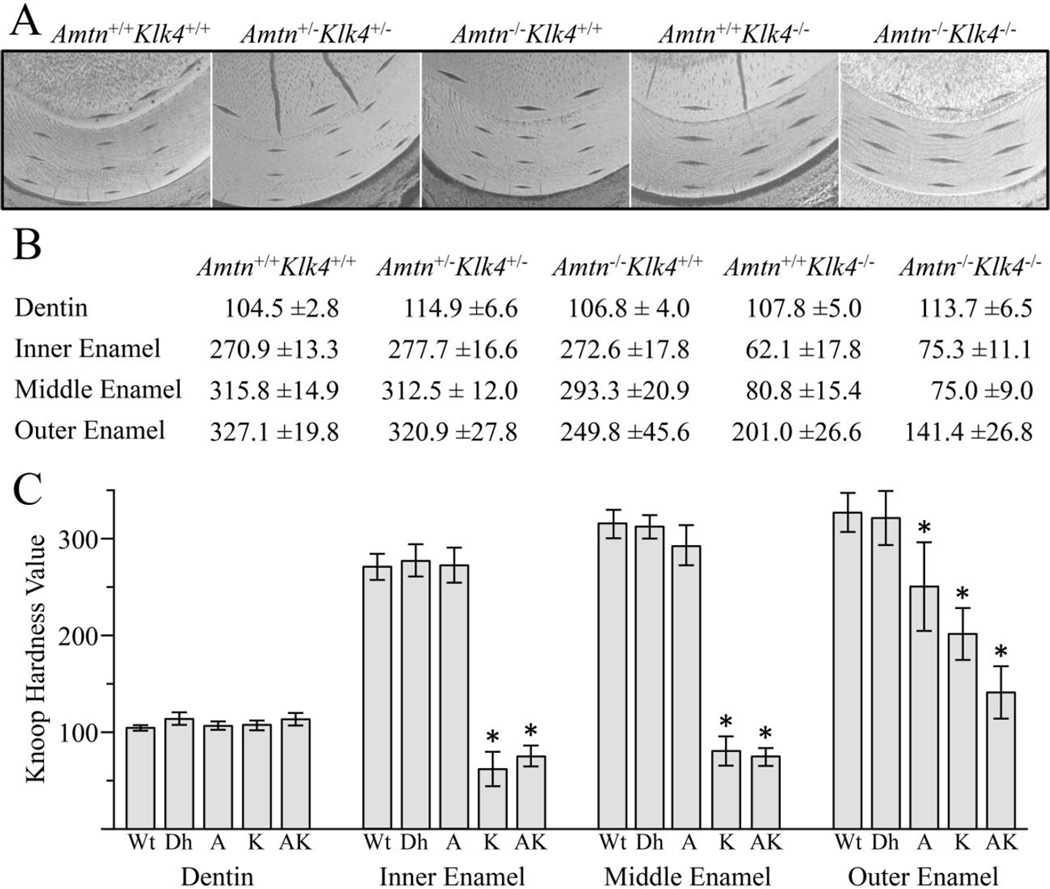Fig. 6.
Knoop Hardness Values. A: Indentations were made in dentin, and the inner, middle, and outer enamel of 7-week mandibular incisor sections at the level of the alveolar ridge (sample images shown). The indentations in dentin and the inner enamel were targeted between 15–20 µm from the DEJ. The outer enamel was targeted 15–20 µm from the enamel surface. The middle enamel indentation was targeted halfway between the outer and inner enamel indents. Three series of indentations were generated per incisor. The size of the indentations inversely correlates with hardness, so the larger the indentation, the softer the enamel. B: All values are expressed as mean Knoop hardness values ± standard deviation (N=6 animals per genotype). C: Plots of the average hardness measurements. Key: Wt, wild-type; Dh, double heterozygous (Amtn+/−Klk4+/−); A, Amtn−/−Klk4+/+; K, Amtn+/+Klk4−/−; AK, Amtn−/−Klk4−/−. No significant differences in the hardness of dentin were observed between any of the genotypes. No significant differences were observed between the wild-type and double heterozygous mice. The outer enamel of the Amtn−/− mouse was significantly softer than that of the wild-type. The enamel of the Klk4−/− and Amtn−/−Klk4−/− mice was softer than the wild-type enamel at all levels. Significant differences with wild-type enamel are indicated by an asterisk (t-test, p<0.001). The outer enamel of the Amtn−/−Klk4−/− mice was significantly softer than both the Amtn−/− and the Klk4−/− single nulls (t-test, p<0.001).

